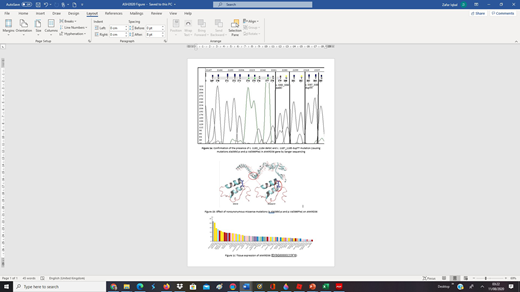Introduction:
Chronic Myeloid Leukemia (CML) is initiated due to t (22;9) giving rise to Philadelphia chromosome and fusion oncogene BCR-ABL1. Discovery of BCR-ABL led to development of molecularly-targeted drugs called tyrosine kinase inhibitors (TKI), that have revolutionized CML treatment in first quarter of 21st century, by transforming a once fatal disease into a almost-cured cancer. Due to TKIs, survival of CML has become equal to general population, with possibility of a number of CML patients to undergo treatment-free remission. Nevertheless, TKIs are minimally effective in blast crisis CML patients (BC-CML), making this group of CML patients one of the biggest therapeutic challenge in modern cancer medicine. Unfortunately, a common biomarker for BC-CML is not available and mechanism of CML progression to advanced phases poorly understood3. Therefore, objective of our study was to find a common molecular biomarker of disease progression and specifically BC in CML.
Materials and Methods:
Patient selection: CML patients in accelerated and blast crisis phase CML (Experimental group) were subjected to whole exome sequencing (WES) along with appropriate controls (Chronic phase treatment-naïve CML patients as Control 1, Chronic phase CML long-term TKI responders (at least 2 continuous years of MMR)2 as Control group 2, CML patients with resistant to TKIs as Control group 3 and healthy controls).
Sample collection: DNA extraction and Clinical follow-up: 10 ml peripheral blood was collected from all study subjects. DNA was extracted and patient follow-up was carried out during course of this study. All criteria per ENL guidelines were adopted.
Whole Exome Sequencing (WES): WES was carried out using Illumina NGS instrument (HiSeq). bcl files were converted to fastq files by using bcl2fastqtool4. Raw reads were aligned to genome using BWA tools while whole exome variants were annotated using Illumina Variant Studio4. R package was employed to align specific gene mutants to disease phenotypes5. Variants were confirmed using Sanger sequencing. Genes mutated in all AP/BC-CML patients but not mutated in any of control groups were selected.
Results and Discussion:
We found some novel as well as known genes associated with diverse biological functions mutated in all AP/BC-CML6. We found some previously uncharacterized genes like ANKRD36; genes associated with vital life processes, for example, POTE-G (member of cancer-testis antigen family), SARM1 (apoptosis and immunity), OR9G1 (member of G-protein-coupled receptors), RNF212 (Meiotic crossing-over) etc.; genes reported in other cancers (PRSS3, MUC6, ESRR-A, RASA4, PDE5-A, DACH-1, TRAK1 etc.); DNA repair genes (FANCD2 and ATXN3) and genes involved in transcriptional regulation (unique ZNF family genes). As ANKRD36 (ENSG00000135976) has previously uncharacterized in human and its protein structure was unknown, its protein sequence was retrieved (https://www.uniprot.org/uniprot/A6QL64), computational prediction of the protein structure was performed using I-Tasser7, the mutations manually evaluated, and the wild and mutated structures superimposed using PyMOL8. ANKRD36 has maximum expression in bone marrow, specifically myeloid cells (figure 1a-c)9. Thus, it is may serve as a potential biomarker and drug target in CML. We recommend carrying out further studies to explore the role of ANKRD36 in biology and progression of CML.
References:
1: Valent P, Herndlhofer S, Schneeweiß M, Boidol B, Ringler B, Kubicek S, et al. Oncotarget. 2017 Apr 4; 8(14): 23061-23072.
2: Annunziata M, Bonifacio M, Breccia M, Castagnetti F, Gozzini A, Iurlo A, et al. Front Oncol. 2020 ;10:883.
3: Feng XQ, Nie SM, Huang JX, Li TL, Zhou JJ, Wang W, et al. Neoplasma, 2020 ;67(1):171-177.
4: Hashmi JA, Albarry MA, Almatrafi AM, Albalawi AM, Mahmood A, Basit S. Congenit Anom (Kyoto). 2017 Apr 16. doi: 10.1111/cga.12225. [Epub ahead of print].
5: R Core Team (2012). R Foundation for Statistical Computing, Vienna, Austria. ISBN 3-900051-07-0, URL http://www.R-project.org/
6: GeneCards: The Human Gene Database, https://www.genecards.org, accessed 11th Aug 2020.
7: Zhang Y. I-TASSER server for protein 3D structure prediction. BMC Bioinformatics. 2008 Jan 23;9:40.
8: DeLano, W. L. CCP4 Newsletter On Protein Crystallography. 2002; 40:82-92.
9: Fagerberg L, Hallström BM, Oksvold P, Kampf C, Djureinovic D, Odeberg J, et al. Mol Cell Proteomics. 2014 Feb;13(2):397-406.
Jamil:Novartis: Honoraria, Other: Travel Support; Roche: Honoraria, Other: Travel Support.
Author notes
Asterisk with author names denotes non-ASH members.


This feature is available to Subscribers Only
Sign In or Create an Account Close Modal